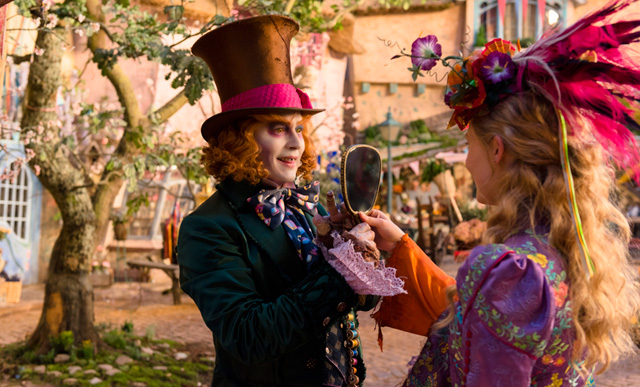Memorial Day on PBS: Of Men and War
Posted on May 28, 2016 at 1:35 pm
Post-traumatic stress disorder, or PTSD, affects almost 30 percent of the 834,467 Iraq and Afghanistan War veterans treated through the U.S. Department of Veterans Affairs. Consumed by anger and traumatic memories long after their return, soldiers often resort to drugs or suicide to end their suffering.
Filmmaker Laurent Bécue-Renard provides a searing account of how the disorder has affected veterans and their families in Of Men and War. The film offers an unparalleled look at the enduring consequences of PTSD and the role treatment can play in helping soldiers reclaim their lives. An Official Selection of the 2014 Cannes Film Festival, the documentary has its national broadcast premiere during the 29th season of POV (Point of View) on Memorial Day, Monday, May 30, 2016 at 10 p.m. on PBS. (Check local listings.)
Of Men and War, made between 2003 and 2014, begins with a scenic drive through California’s Napa Valley, where therapist and social worker Fred Gusman, who pioneered revolutionary PTSD programs at the Veterans Administration in the late 1970s, opened The Pathway Home residential treatment center in Yountville in 2008. The beauty of the surroundings stands in stark contrast to the intense inner turmoil suffered by the veterans arriving by van.
Bécue-Renard filmed the servicemen speaking for the first time about their experiences. Survival in a war zone required a hardened attitude—“Rage and anger carried me through everything,” says one veteran—accompanied by alienation even from those in their units. “He was there and then he was gone,” a soldier says of a friend killed during their deployment together in Iraq. “It’s hard being close to anybody because you know they’re going to leave any time.” These attitudes did not disappear when combat tours ended.
“The return to civilian life is not what they thought it would be,” says Gusman, Pathway’s lead therapist. One veteran says that he “woke up mad” and “took things out” on loved ones. “When you come back you feel like you should have died over there. It would have been a hell of a lot easier to just fall down over there and not get back up.” Something as ordinary as driving can cause severe distress; in the combat zone, a soldier explains, an approaching vehicle was always seen as potentially carrying a bomb. That fear returns if a car pulls too close to his in traffic.
The war resurfaces in nightmares and panic attacks. A sudden noise might trigger a flashback. Other times, all it takes is a disagreement with a spouse or an ambiguous look from a stranger. Then the groundswell takes over—all that was buried from the war boils up, and the veteran lashes out. “The day I came home from Iraq was the last time I saw my daughter,” says one soldier. “I was given a restraining order.”
The film underscores another problem: Seeking help for PTSD can be a difficult step to take. “What we have is embarrassing,” a soldier says. It makes him feel “small” and “defective.” Wives and girlfriends often feel helpless. “I’m scared he’s going to give up trying,” says one.
Bécue-Renard says his camera performed a significant role in the soldiers’ therapy. “They came to perceive the filming itself as an additional glimmer of hope. Consciously or not, the veterans began to sense that voicing their brutal experiences might uncover deeper meaning: Their stories might contribute to a greater public consciousness of the hardships veterans confront long after the war’s end.”
Of Men and War shows that for many veterans, recovery will be a lengthy process. Although therapists cite the necessity of forgiveness, one soldier, who killed a colleague by mistake, responds, “I think it would be really selfish for me to learn to forgive myself.”
“Of Men and War came out of a reflection on what was left unspoken by my grandfathers,” says Bécue-Renard. “They had died by the time I was born—but they had also staunchly refused to talk about their experiences from the First World War while they were alive. Of Men and War is my way of honoring them.
“It took 11 years between my first idea for the film—when the Iraq war began in 2003—and its completion in May 2014. I spent 14 months in the therapy center and returned many times in the four years that followed. Filming therapy was a way of acknowledging people who had decided to move forward with their lives. Some days I’d leave the therapy room overwhelmed. How was I to make sense out of this mess? How could I communicate it to an audience? I became convinced that from all this mud, I could eke out rays of light. In doing so, I could find meaning for the protagonists in Of Men and War as well as for its viewers.”


